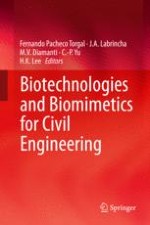2015 | OriginalPaper | Buchkapitel
14. Production of Bacteria for Structural Concrete
verfasst von : Varenyam Achal
Erschienen in: Biotechnologies and Biomimetics for Civil Engineering
Aktivieren Sie unsere intelligente Suche, um passende Fachinhalte oder Patente zu finden.
Wählen Sie Textabschnitte aus um mit Künstlicher Intelligenz passenden Patente zu finden. powered by
Markieren Sie Textabschnitte, um KI-gestützt weitere passende Inhalte zu finden. powered by
